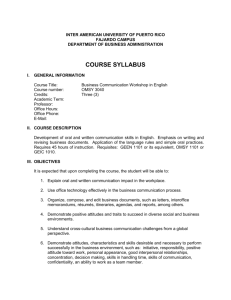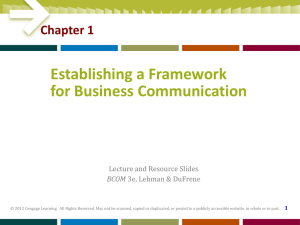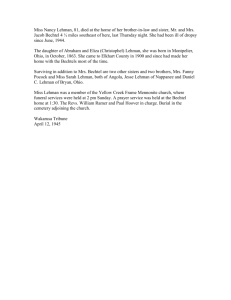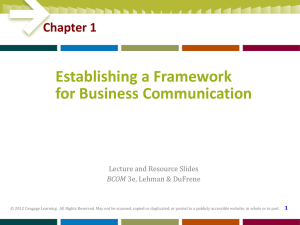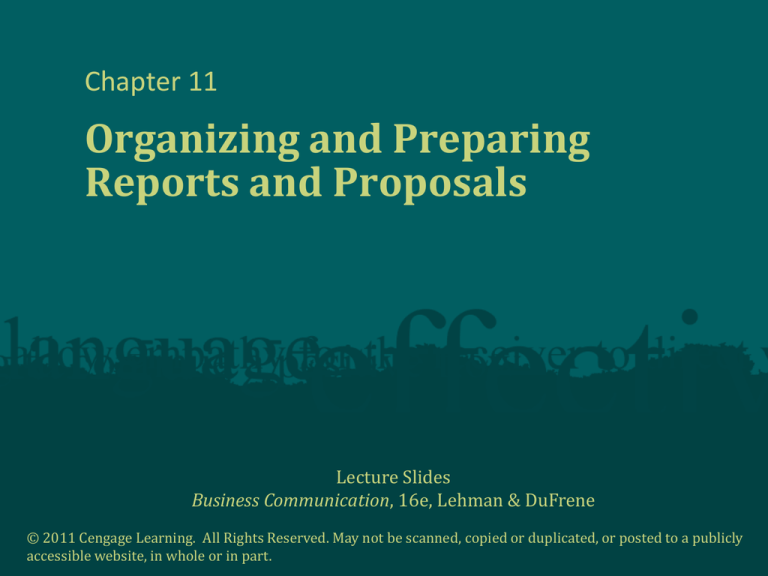
Chapter 11
Organizing and Preparing
Reports and Proposals
Lecture Slides
Business Communication, 16e, Lehman & DuFrene
© 2011 Cengage Learning. All Rights Reserved. May not be scanned, copied or duplicated, or posted to a publicly
accessible website, in whole or in part.
Parts of a Formal Report
Continued
Chapter 11, Business Communication, 16e, Lehman & DuFrene
© 2011
Cengage Learning
Parts of a Formal Report (cont.)
Chapter 11, Business Communication, 16e, Lehman & DuFrene
© 2011
Cengage Learning
Your Turn
How does a report outline relate to the final
report document?
A. The outline guides in organizing
report only.
B. The outline should form the basis
for table of contents.
C. An outline is not necessary when
preparing reports.
D. None of these
Chapter 11, Business Communication, 16e, Lehman & DuFrene
© 2011
Cengage Learning
Developing a Report Outline
I.
Problems
Method
Findings
Conclusions
Outline
Introduction
A.
B.
II.
Product Comparison
A.
B.
C.
D.
III.
Chapter 11, Business Communication, 16e, Lehman & DuFrene
Problem
Method Used
Palm Is Least Expensive
Service/Warranties Favor
Blackberry
Expandability Is Best on
Blackberry
Availability of Applications Is
Equal
Conclusion: Blackberry Is the
Best Buy
© 2011
Cengage Learning
Using Headings Effectively
• If sections are divided, use at least two
subdivisions
• Treat all headings at the same level
consistently
– Placement on page and appearance
– Grammatical construction
• Do not place two headings together
without intervening text
Chapter 11, Business Communication, 16e, Lehman & DuFrene
© 2011
Cengage Learning
Choosing an Effective Writing Style
• Avoid __________
first-person pronouns
consistent tense
• Use active
_____ voice and _________
• Avoid __________
consecutive headings without
intervening text
• Use _________
transition sentences to link
sections
coherence techniques
• Use a variety of _________
Chapter 11, Business Communication, 16e, Lehman & DuFrene
© 2011
Cengage Learning
Improving Transitions
• Use tables and numbered lists
• Define terms carefully
• Use a variety of transitions to keep
reader interest
Chapter 11, Business Communication, 16e, Lehman & DuFrene
© 2011
Cengage Learning
Enhancing Credibility
emotional
• Avoid _________terms
• Identify ___________
assumptions
• Label opinions
_______
• Use documentation
_____________
Chapter 11, Business Communication, 16e, Lehman & DuFrene
© 2011
Cengage Learning
Writing Techniques for
Short Reports
Short reports can use . . .
personal writing style with first• A __________
or second-person
natural style
• Contractions for ________
reinforce text
• Graphics to __________
partition text
• Heads and subheads to __________
Chapter 11, Business Communication, 16e, Lehman & DuFrene
© 2011
Cengage Learning
Structure of a Proposal
Problem or purpose
Scope
Method and procedure
Materials and equipment
Qualifications
Follow-up and evaluation
Budget and costs
Summary
Addenda
Chapter 11, Business Communication, 16e, Lehman & DuFrene
© 2011
Cengage Learning
Process for Preparing Proposals
• Start with an easy-to-prepare section
after determining parts to include
• Complete all sections and arrange in
appropriate order
• Check transitions between sections
• Proofread, edit, and check figures
thoroughly
Chapter 11, Business Communication, 16e, Lehman & DuFrene
© 2011
Cengage Learning

